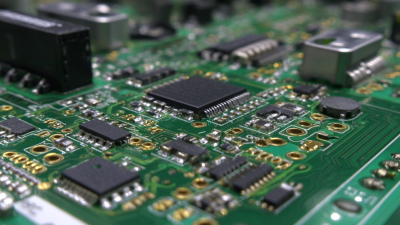
Unveiling PCB and Assembly Innovations at the 138th China Import and Export Fair 2025
The 138th China Import and Export Fair in 2025 serves as an unprecedented platform for showcasing cutting-edge innovations in the realm of PCB and assembly technologies. As industries increasingly pivot toward sophisticated electronic solutions, the fair highlights the transformative impact of these advancements on various sectors, from consumer electronics to automotive applications. Exhibitors are set to unveil pioneering designs and manufacturing techniques that not only enhance performance but also improve efficiency and sustainability. This event promises to connect manufacturers, suppliers, and industry stakeholders eager to explore the latest trends and developments in PCB and assembly, creating opportunities for collaboration and growth within the global market. The unveiling of these innovations at such a prestigious gathering underscores the significance of this technology in driving the future of electronics and elevating China's role in the global supply chain.
Read more »
 By:Oliver - October 21, 2025
By:Oliver - October 21, 2025
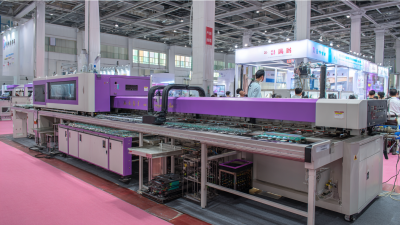
Revolutionizing PCB Printing: Insights from the 138th China Import and Export Fair 2025
The 138th China Import and Export Fair in 2025 serves as a pivotal platform for showcasing advancements in various industries, particularly in the realm of PCB printing. With the global PCB market projected to reach approximately $75 billion by 2027, driven by the accelerating demand for electronics in sectors such as automotive and telecommunications, innovations in PCB printing technology are more crucial than ever. This year's fair presents groundbreaking insights into state-of-the-art processes, materials, and equipment that promise to enhance efficiency and sustainability in PCB manufacturing. As reported by industry analysts, adopting advanced PCB printing methods can reduce production time by up to 30% while maintaining high precision levels, marking a significant leap forward in the quest for smarter, more reliable electronic components.
Read more »
 By:Oliver - October 16, 2025
By:Oliver - October 16, 2025
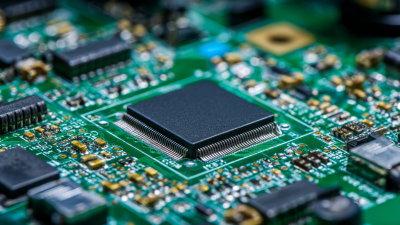
How to Optimize Printed Circuit Board Assembly for Maximum Efficiency and Quality
In the ever-evolving world of electronics, optimizing printed circuit board assembly (PCA) is crucial for enhancing both efficiency and quality in production processes. This article delves into best practices and innovative strategies that manufacturers can implement to streamline PCA, ensuring that they meet the demanding standards of the industry. From selecting the right materials and components to adopting advanced technologies and methodologies, our exploration highlights the critical elements that contribute to a more efficient assembly process. We'll examine how careful planning, precise execution, and continuous improvement can lead to significant reductions in production time and costs while simultaneously boosting the reliability and performance of the final products. By understanding and applying these techniques, electronics manufacturers can position themselves for success in a competitive marketplace, while delivering high-quality printed circuit boards that meet or exceed customer expectations.
Read more »
 By:Oliver - October 12, 2025
By:Oliver - October 12, 2025
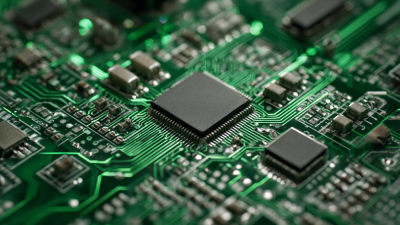
How to Design and Manufacture a High-Quality Printed Circuit Board from Scratch
The demand for printed circuit boards (PCBs) continues to surge, driven by the rapid advancements in technology and the proliferation of electronic devices across various industries. According to a recent market research report by IPC, the global PCB market is expected to reach approximately $80 billion by 2024, reflecting a compound annual growth rate (CAGR) of over 5% from previous years. This growth underscores the critical role that high-quality PCB design and manufacturing plays in the electronics supply chain. However, designing and producing a PCB from scratch can be a daunting task, requiring not only a solid understanding of electrical engineering but also familiarity with manufacturing processes and materials. In this guide, we will delve into the essential steps and best practices for creating a high-quality printed circuit board that can meet the evolving demands of modern technology.
Read more »
 By:Charlotte - October 8, 2025
By:Charlotte - October 8, 2025
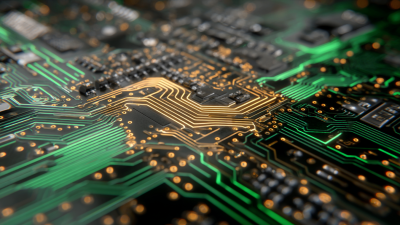
10 Smart Tips for Mastering PCB Circuit Design in the Digital Era
In the rapidly evolving landscape of electronics, mastering PCB circuit design has become more critical than ever. According to a report by Markets and Markets, the global printed circuit board market is projected to reach $90.28 billion by 2025, growing at a CAGR of 3.3% from 2020 to 2025. This growth is fueled by the increasing demand for advanced electronic devices and the Internet of Things (IoT), making efficient and innovative PCB circuit design essential for engineers and designers alike. In the digital era, where technology trends like miniaturization and high-frequency performance dominate, understanding the nuances of PCB circuit design can dramatically impact product reliability, speed of development, and manufacturing costs. This blog will explore ten smart tips to enhance your PCB circuit design skills, ensuring you stay ahead in this competitive industry.
Read more »
 By:Oliver - October 3, 2025
By:Oliver - October 3, 2025
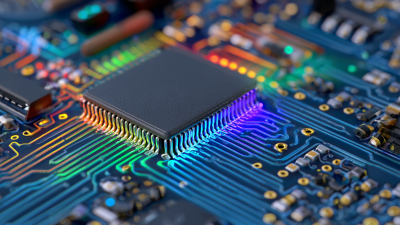
Comprehensive Guide to Understanding PCB Circuit Applications and Trends in 2023
In 2023, the landscape of electronics is increasingly shaped by advancements in PCB circuit technology, reflecting a significant evolution in their applications across various industries. According to a recent report by Fortune Business Insights, the global PCB market is expected to grow from $71.15 billion in 2021 to $98.44 billion by 2028, driven by the increasing demand for smart devices, automotive electronics, and IoT applications. This surge underscores the importance of understanding the latest trends and innovations in PCB circuits, as they play a crucial role in enabling complex electronic systems and enhancing overall performance. With a focus on key applications ranging from consumer electronics to industrial automation, this comprehensive guide aims to provide insights into the current state of PCB circuit technology and its future trajectory, offering a valuable resource for professionals and enthusiasts alike.
Read more »
 By:Oliver - September 30, 2025
By:Oliver - September 30, 2025

12 Innovative Advantages of Flexible Printed Circuits You Need to Know
In today's rapidly evolving technological landscape, the demand for compact and efficient electronic solutions has never been greater, making flexible printed circuits an essential component in modern design. Flexible printed circuits, often referred to as FPCs, offer a unique blend of versatility and reliability, allowing engineers and designers to create intricate circuitry that can bend and flex without sacrificing performance. From consumer electronics to medical devices, the innovative advantages of flexible printed circuits are reshaping the industry, enabling the development of more streamlined and lightweight products. In this blog, we'll dive into twelve key benefits of flexible printed circuits that highlight their significance and transformative impact on various applications. Whether you're an industry professional or a tech enthusiast, understanding these advantages can help you appreciate the crucial role FPCs play in the future of electronics.
Read more »
 By:Oliver - September 26, 2025
By:Oliver - September 26, 2025

Benefits of Enhanced Durability in Circuit Board Manufacturing for Electronics
In the rapidly evolving electronics industry, the durability of circuit boards has become a critical factor in determining the performance and lifespan of electronic devices. According to a report by IPC, the global market for printed circuit boards is anticipated to reach $82.27 billion by 2026, driven by the increasing demand for consumer electronics and automotive applications. Enhanced durability in circuit board manufacturing not only mitigates the risk of failures caused by environmental stressors but also improves the overall reliability of electronic products. Industry studies show that durable circuit boards can reduce maintenance costs by up to 30% and extend product lifecycles significantly. As manufacturers strive to meet these heightened demands, understanding the benefits of enhanced durability in circuit board design and production is essential for sustaining competitiveness in the market.
Read more »
 By:Oliver - September 23, 2025
By:Oliver - September 23, 2025

15 Essential Tips for Efficient Printed Circuit Board Assembly
In the rapidly evolving electronics industry, printed circuit board assembly (PCBA) plays a crucial role in the performance, reliability, and cost-effectiveness of electronic devices. According to a report from Research and Markets, the global PCBA market is expected to reach $78 billion by 2026, growing at a CAGR of 4.5% from 2021 to 2026. This growth underscores the increasing importance of efficient assembly processes as manufacturers strive to meet consumer demand for smaller, faster, and more reliable electronics. Implementing best practices in PCBA can significantly enhance production efficiency, minimize errors, and reduce time-to-market. In this ultimate guide, we present 15 essential tips aimed at optimizing your printed circuit board assembly process, enabling your team to navigate the complexities of modern electronics manufacturing with confidence and precision.
Read more »
 By:Emily - September 20, 2025
By:Emily - September 20, 2025

Exploring Unique Alternatives to Flexible PCB Board Solutions
As the demand for compact and lightweight electronic devices continues to rise, flexible PCB boards have emerged as a revolutionary solution in circuit design, enabling manufacturers to meet the growing needs of various industries, including telecommunications, automotive, and medical devices. However, recent industry reports indicate that while flexible PCB boards offer advantages such as improved space utilization and adaptability, they also come with significant challenges, including higher costs and material limitations. According to a market analysis by Research and Markets, the global flexible printed circuit board market is expected to reach $25.71 billion by 2025, underscoring the necessity for alternative solutions that address these problems. As we explore unique alternatives to flexible PCB board solutions, this blog will delve into innovative materials and design approaches that can provide similar benefits with fewer drawbacks, paving the way for the next generation of electronic applications.
Read more »
 By:Charlotte - September 17, 2025
By:Charlotte - September 17, 2025

Exploring Innovative Alternatives in PCB Electronics for Modern Applications
As the demand for advanced electronic devices continues to surge, the evolution of pcb electronics has become imperative in addressing the complexities of modern applications. According to a recent market report by Research and Markets, the global PCB market is projected to reach approximately $84 billion by 2026, reflecting a significant growth rate spurred by innovations in technology such as IoT and 5G applications. This escalation prompts a critical examination of traditional PCB manufacturing methods and challenges us to explore innovative alternatives that not only enhance functionality but also optimize cost and efficiency. In this blog, we will delve into the latest advancements and alternative materials in PCB electronics that are reshaping the landscape of electronic design and manufacturing, ensuring that they meet the rigorous demands of contemporary industries.
Read more »
 By:Charlotte - September 12, 2025
By:Charlotte - September 12, 2025

Digital Insights and Tips for Optimizing Your Flexible Printed Circuit Design Process
As the electronics industry continues to evolve at a rapid pace, the demand for innovative designs and efficient manufacturing processes has never been higher. According to a recent report by Research and Markets, the flexible printed circuit (FPC) market is projected to reach $32.96 billion by 2025, growing at a CAGR of 11.6% from 2020. This growth is driven by the increasing adoption of FPCs in consumer electronics, automotive applications, and medical devices, where space-saving and lightweight solutions are critical. To stay competitive, engineers and designers must optimize their FPC design processes, incorporating digital insights and advanced tools that enhance productivity and accuracy. In this blog, we will explore key strategies and best practices for refining your flexible printed circuit design, ensuring that you remain at the forefront of this dynamic industry.
Read more »
 By:Emily - September 8, 2025
By:Emily - September 8, 2025

The Future of Aluminum PCB: Innovations Driving Sustainable Electronic Design
As the electronics industry increasingly prioritizes sustainability, the role of aluminum PCBs in driving innovative and eco-friendly designs has never been more critical. Recent studies indicate that the global market for aluminum PCBs is expected to grow at a compound annual growth rate (CAGR) of 6.8% from 2021 to 2026, reflecting a heightened demand for lightweight and thermally efficient alternatives to traditional circuit boards. This surge in popularity is largely attributed to advancements in materials technology and manufacturing processes, which not only enhance performance characteristics but also align with eco-conscious design principles. By incorporating aluminum PCBs, manufacturers can significantly reduce energy consumption and improve thermal management in electronic devices. As we explore the future of aluminum PCBs, we will delve into the innovations that are shaping sustainable electronic design and how they contribute to a greener planet.
Read more »
 By:Oliver - September 4, 2025
By:Oliver - September 4, 2025

Unlocking Success: The Advantages of Advanced PCB Fabrication Techniques for Global Buyers
In the evolving landscape of electronics, the significance of advanced PCB fabrication techniques cannot be overstated. According to a report by MarketsandMarkets, the global PCB market is projected to reach $90.7 billion by 2025, driven by the increasing demand for sophisticated electronic devices. As the complexity of electronic designs grows, so too does the necessity for high-precision PCB fabrication methods that can accommodate intricate layouts and enhance reliability. These advanced techniques not only improve manufacturing efficiency but also contribute to cost savings and product performance, which are crucial for global buyers seeking to stay competitive in a fast-paced industry. By understanding the benefits of these innovations in PCB fabrication, companies can unlock substantial advantages, ultimately leading to increased market share and customer satisfaction.
Read more »
 By:Charlotte - August 28, 2025
By:Charlotte - August 28, 2025
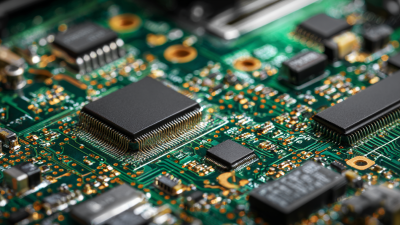
Innovative Circuit Board Assembly Techniques Shaping the Future of Electronics
The rapid evolution of technology has ushered in a new era for circuit board assembly, a critical component in the manufacturing of electronic devices. According to a recent report by Research and Markets, the global circuit board assembly market is projected to reach USD 50 billion by 2026, growing at a CAGR of 5.8% from 2021. This surge is driven by the increasing demand for miniaturization, higher efficiency, and greater performance in electronics, pushing manufacturers to adopt innovative assembly techniques. As industries strive for faster production cycles and improved quality, state-of-the-art methods such as automated assembly and advanced soldering techniques are revolutionizing the landscape. These innovations not only enhance productivity but also address the complexity of modern electronic products, laying the groundwork for a more connected and efficient future.
Read more »
 By:Charlotte - August 23, 2025
By:Charlotte - August 23, 2025





